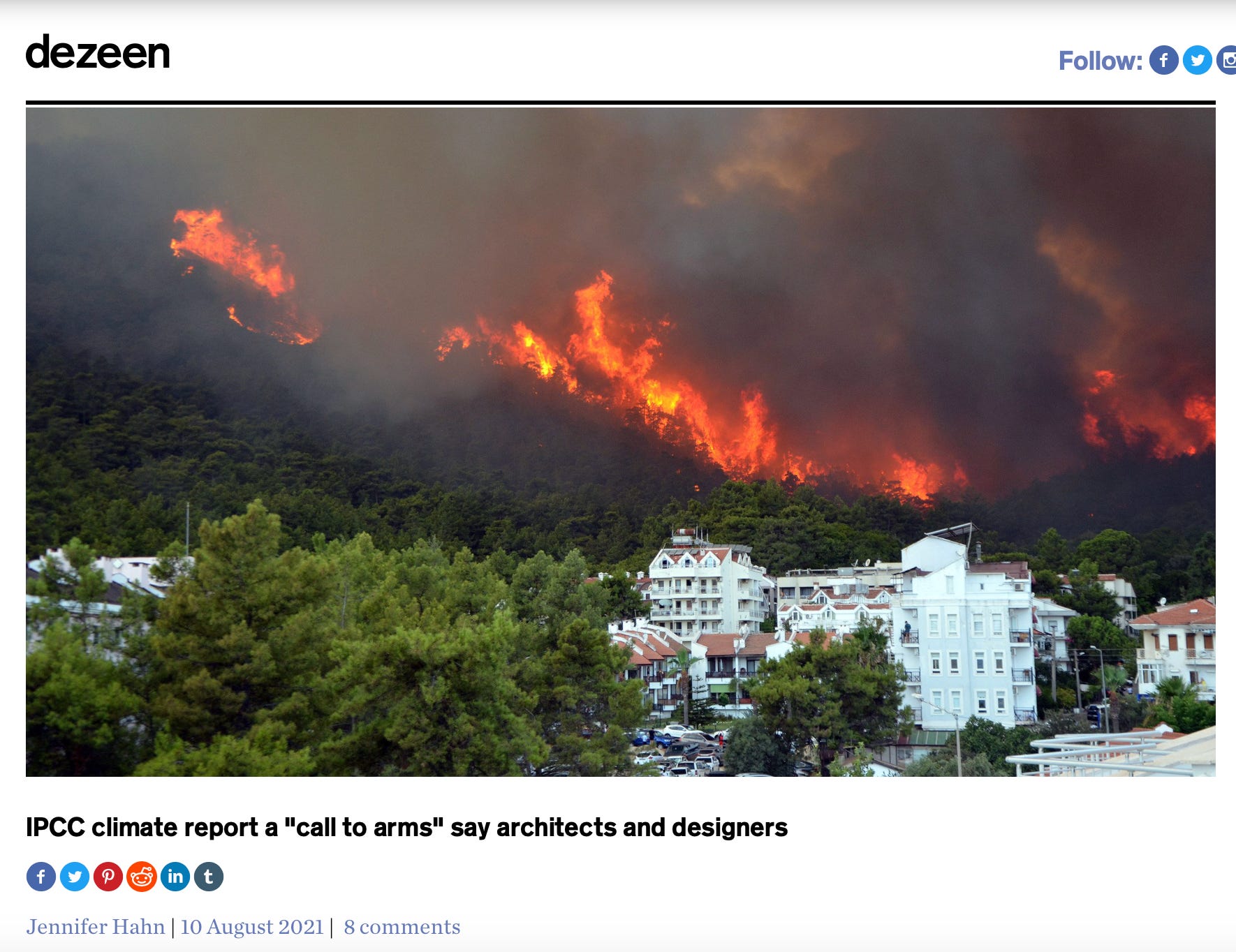
Photo by Markus Spiske on Unsplash
The publication of the IPCC Climate change report last week has left many designers wondering what they can do in the face of its alarming findings. URGE co-founder Alexie Sommer responds
The most striking of the report’s headline statements in terms of practical action are:
B.1 Global surface temperature will continue to increase until at least the mid-century under all emissions scenarios considered. Global warming of 1.5°C and 2°C will be exceeded during the 21st century unless deep reductions in carbon dioxide (CO2) and other greenhouse gas emissions occur in the coming decades.
D.1 From a physical science perspective, limiting human-induced global warming to a specific level requires limiting cumulative CO2 emissions, reaching at least net zero CO2 emissions, along with strong reductions in other greenhouse gas emissions. Strong, rapid and sustained reductions in CH4 emissions would also limit the warming effect resulting from declining aerosol pollution and would improve air quality.
With the consequence:
D.2 Scenarios with low or very low greenhouse gas (GHG) emissions (SSP1-1.9 and SSP1- 2.6) lead within years to discernible effects on greenhouse gas and aerosol concentrations, and air quality, relative to high and very high GHG emissions scenarios (SSP3-7.0 or SSP5-8.5). Under these contrasting scenarios, discernible differences in trends of global surface temperature would begin to emerge from natural variability within around 20 years, and over longer time periods for many other climatic impact-drivers (high confidence).
So what does this mean for designers?
There is one key comment to make - the process of design, and the solutions it produces, need to be zero carbon, and fast.
This report reiterates the importance of the design industry using its creativity, ingenuity and skills to drastically reduce carbon in the atmosphere. Designers need to be able to assess projects not simply by functional and aesthetic measures but also by impact. How much carbon goes into the production, and how much waste is produced, when creating an object, building or campaign? We know that 90% of the impact of the life of a product is embedded at the design stage, but designers need to practically measure this to support positively impactful decision-making.
Design is the bridge between industry and society, and designers have an important role to play in influencing both clients, manufacturers and the public. Designers can choose the clients they work with, influence client decisions, challenge the brief, and ensure zero carbon design.
This is also not just a professional call for action - it's personal. We will all be affected by the consequences of climate change and we all have the capacity to make simple life choices that effectively reduce our carbon footprints.
We encourage designers to engage with COP26 and the Design Council's #DesignForPlanet event that is taking place this November in Glasgow.

URGE co-founders Sophie Thomas and Michael Pawlyn were also invited to comment by Dezeen. Read the full article here
“The latest climate science should make designers completely rethink our idea of success. What would it mean to be successful in perpetuating a system that will destroy the future for billions of people?” Michael Pawlyn
“Design needs to shift completely in the face of the new data. Old models don't apply now unless we are all happy to be part of the problem,” Sophie Thomas.

